|
|
|
|
|
|
|
|
|
|
|
|
|
|
|
|
|
|
|
|
|
|
|
|
|
|||||||
Ivydene Gardens Conifer Tree Gallery: |
|||
Conifer Tree Height from Text Border |
Blue = 0-20 feet (0-600 cms) |
Green = 20-40 feet (600-1200 cms) |
Red = 40+ feet (1200+ cms) |
Conifer Tree Soil Moisture from Text Background |
Wet Soil |
Moist Soil |
Dry Soil |
Click on thumbnail to change this comparison page to the Conifer Tree Description Page of the Conifer Tree named in the Text box below that photo. |
|||
CONIFER TREE GALLERY PAGES Conifer Tree Index |
LEAF COLOUR |
SHAPE |
CONE COLOUR BED PICTURES |
||
|
|
|
|
||
Conifer |
Height x Spread in feet (cms) 12 inches = 1 foot = 30 cms |
Foliage Colour |
Use |
||
Trunk Image |
Shape Image |
Foliage Image |
Cones Image |
||
Abies koreana |
30 x 20 Narrow Conical After ten years it is usually not higher than 2.5 meters. |
Dark Green, Silver beneath |
Best grown as a specimen tree, or in a bed - surrounded while small - with ornamental grasses and ground-hugging callunas, especially those with coloured foliage. |
||
|
|
|
|
||
Cryptomeria japonica |
80 x 20 Narrow Conical |
Mid to Deep Green |
Good screening tree. |
||
|
|
|
|
||
Cryptomeria japonica 'Elegans Compacta' |
9 x 6 Broad Conical |
Juvenile Dark Green turning Bronze in Winter |
Useful accent plant in bed of heathers and as screen |
||
|
|
|
|
||
Juniperus communis |
10 x 10 Columnar - Because of its dense cover of prickly needles, juniper provides a good nesting site for birds such as the goldcrest (Regulus regulus) and the song thrush (Turdus philomelos), and it is also important in providing winter cover for the black grouse (Tetrao tetrix). The berries are eaten, and the seeds distributed, by birds such as the fieldfare (Turdus pilais), which is a seasonal migrant from Scandinavia, and the ring ouzel (Turdus torquatus). |
Deep Green Juniper foliage is eaten by mammals such as red deer (Cervus elaphus) and rabbits (Oryctolagus cuniculus), and the current excessive populations of both of these species has contributed to the current decline in juniper's distribution in the UK. The burning of moorland also limits the ability of juniper to regenerate. Think twice about junipers if you or your neighbours grow pears. Juniper-Pear Rust is becoming a common fungus that switches between pears and junipers in alternate years. When it attacks pear leaves, they drop early and the yield of pears is reduced. In some pear-growing areas of the USA the planting of junipers is illegal. |
Ground-cover. A small conical tree may make a good specimen tree but has also been known to make a good avenue. "The colloquial name for gin - which is flavoured with juniper is 'Mother's Ruin' - is based on the juniper's ability to cause miscarriage." from The Poison Garden. |
||
|
|
|
|
||
Juniperus recurva |
30 x 15 Broad Conical |
Grey-Green |
Ornamental tree valued for its drooping foliage. |
||
|
|
|
|
||
Juniperus recurva 'Densa'. Correct name is Juniperus squamata. |
2 x 4 Narrow Conical |
Dark Green |
Ground-cover, container and hedges. |
||
|
|
|
|
||
Juniperus viginiana |
70 x 20 Columnar - A tree shape designed by nature to be a haven for nesting birds. |
Grey-Green with Bronze cast in Autumn |
Windbreak, screen or speciman. Nesting and cover for wild animals and birds |
||
|
|
|
|
||
|
|||||
Dobbies provides the following in its Easy Guide to growing Conifers (cannot find their advice page in September 2018):- "Conifers come in a vast range of colours and many change shade during the year. Careful choice can give you a great splash of colour in autumn and winter when most other plants are dormant. Size is determined by variety and not by size at planting. Most plant labels carry a 10-year height as part of the description. Generally: • [d] = dwarf, under 40cm in 10 years • [s] = slow, under 1m in 10 years • [m] = medium, up to 2m in 10 years • [f] = fast, anything above that. Growth rates vary: some grow quickly straight away (x Cupressocyparis leylandii) but then need to be kept in check; others are very slow for a time and then grow rapidly (Araucaria araucana – monkey puzzle); while some barely grow more than 2cm a year (Picea mariana ‘Nana’ – spruce). Choosing & Planting Conifers will tolerate most soils, but avoid planting in areas that waterlog regularly, except for Taxodium distichum (swamp cypress) and Metasequoia (dawn redwood). A very chalky soil will suit Taxus (yew), some junipers and pines. Local climate, such as areas of high or low rainfall, can affect height and spread. Before planting, remove the tree from the pot and soak the rootball in a bucket of water for about 10 minutes. Clear the area of weeds. Make the planting hole about twice the size of the rootball; the top of the rootball should be just 2.5cm below ground level. Refill the planting hole with the original soil mixed with peat, coir or very well-rotted compost. Do not use nitrogenous fertilisers such as poultry or horse manure or bedding plant compost as this usually contains fast-release fertiliser, which can damage conifer roots. One or two feeds with a slowrelease fertiliser will be quite enough to maintain growth. Give enough water to keep the rootball moist but not waterlogged in the early years after planting. Recommended Plants There are well over 1,000 different conifer cultivars to choose from; if you cannot find a specific variety that you’re looking for, there will be alternatives. When choosing conifers for a certain position, it is easier to find them by height, colour and growth habit rather than trying to remember a long Latin name. New cultivars have much more user-friendly names! Below is a list of some of the more popular cultivars, although the choice is practically endless. For more varieties, take a trip to your local garden centre or nursery, or visit www.conifers.org.uk (this domain name is for sale in September 2018). Hedging Green Chamaecyparis lawsoniana ‘Green Hedger’ [m], x Cupressocyparis leylandii [f], Taxus baccata [m], Thuja plicata ‘Atrovirens’[f], T. occidentalis Emerald [m] & ‘Brabant’ [f] Yellow/Gold Chamaecyparis lawsoniana ‘Stardust’ [m], x Cupressocyparis leylandii ‘Castlewellan’[ f] & ‘Gold Rider’ [f], Cupressus macro carpa ‘Goldcrest’ [f], Taxus baccata golden varieties [m], Thuja occidentalis ‘Sunkist’ [m] Blue/Gray Chamaecyparis lawsoniana ‘Chilworth Silver’ [m] & ‘Pembury Blue’ [m], Cupressus arizonica ‘Blue Ice’ [f] & var. glabra [f] Variegated / White Tipped Chamaecyparis lawsoniana ‘Summer Snow’ [m] & Argenteovariegata’[ m], x Cupressocyparis leylandii ‘Harlequin’ [f], Thuja plicata ‘Zebrina’ [m] Winter Color Cryptomeria japonica Elegans Group [f] & Elegans Compacta [m] Column (fastigiate) Green hamaecyparis lawsoniana Ellwood’s Pillar [s], ‘Grayswood Feather’ [m], ‘Green Pillar’ [m], and ‘Little Spire’ [m], Cupressus sempervirens ‘Totem Pole’ [m], Taxus baccata ‘Fastigiata’ [m] Yellow/Gold Chamaecyparis lawsoniana ‘Ellwood’s Gold’ [m], Cupressus macrocarpa ‘Wilma’ [m], C. sempervirens ‘Swanes Gold’ [s], Juniperus communis ‘Gold Cone’ [s], Taxus baccata ‘Standishi’ [s] Blue/Gray Chamaecyparis lawsoniana ‘Pelt’s Blue’ [f], Juniperus communis ‘Compressa’ [d], J. scopulorum ‘Blue Arrow’ [m], Pinus sylvestris Fastigiata Group [m] Variegated / White Tipped Juniperus scopulorum ‘Silver Star’[m], Taxus baccata ‘Fastigiata Aureomarginata’ [s], ‘Icicle’ [d] & ‘Ivory Tower’ [s] Conal (pyramidal) Green Chamaecyparis lawsoniana ‘Ellwoodii’ m, x Cupressocyparis leylandii ‘Olive’s Green’ f, Picea glauca var. albertiana ‘Conica’ m & ‘Laurin’ d, Thuja occidentalis ‘Holmstrup’ m Yellow/Gold Chamaecyparis lawsoniana ‘Minima Aurea’ [s], ‘Springtime’ [s] & ‘Yvonne’ [m], Thuja occidentalis ‘Yellow Ribbon’ [m] Blue/Gray Abies lasiocarpa ‘Compacta’ [m], Cupressus arizonica ‘Pyramidalis’ [m], Juniperus chinensis ‘Pyramidalis’ [m], Picea glauca Alberta Blue s & ‘Sanders Blue’ s, P. pungens ‘Hoopsii’ [m] & Glauca Group [m] Variegated / White Tipped Chamaecyparis lawsoniana ‘Fleckellwood’ [m], ‘Snow White’ [m] & ‘Summer Snow’ [m], Juniperus chinensis ‘Variegata’ [m], Picea glauca ‘J. W. Daisy’s White’ [s] Bronze / Purple / Winter Color Chamaecyparis thyoides ‘Ericoides’ [s], ‘Rubicon’ [s] & ‘Top Point’ [s] Trimming & Pruning Correctly chosen, most conifers only require a light clip in late summer with secateurs or shears to keep the shape correct. Despite popular myth, x Cupressocyparis leylandii only need one trim a year, preferably in July. Untrimmed fast-growing hedging plants are a social menace, so be a good neighbour and keep them in check. Junipers benefit from occasional radical pruning and most will reshoot from the old wood. However, as with most conifers, don’t let them get too large before pruning otherwise you will have unsightly brown wood for a year or two. Bushy Green Abies balsamea Hudsonia Group d, Chamaecyparis obtusa ‘Nana Gracilis’ s, Pinus mugo varieties s, Tsuga canadensis ‘Jeddeloh’ s Yellow/Gold Chamaecyparis obtusa ‘Fernspray Gold’ [m], ‘Nana’ [d], ‘Nana Aurea’ [s] & ‘Nana Lutea’ [s], C. pisifera ‘Filifera Nana’ [s] & ‘Sungold’ [s], Pinus densiflora ‘Alice Verkade’ [m], Thuja occidentalis ‘Rheingold’ [s], T. plicata ‘Whipcord’ [m] Blue/Gray Chamaecyparis pisifera ‘Boulevard’ [m] & ‘Squarrosa Lombarts’ [m], Juniperus ‘Grey Owl’ [m], J. squamata ‘Blue Star’ [d] Variegated / White Tipped Chamaecyparis lawsoniana ‘Nana Albospica’ [s], C. pisifera ‘Snowflake’ [d], Cryptomeria japonica ‘Sekkan-sugi’ [m], J. x pfitzeriana ‘Sulphur Spray’ [m]/[p]> Bronze / Purple / Winter Color Cryptomeria japonica ‘Elegans Compacta [s], Juniperus horizontalis ‘Andorra Compact’ [d], Podocarpus ‘Blaze’ [d] & ‘County Park Fire’ [d], Platycladus orientalis ‘Rosedalis’ [s] Ball (glubose) Green Chamaecyparis lawsoniana ‘Gnome’ [d], ‘Green Globe’ [d] & ‘Minima Glauca’ [s], Picea abies ‘Little Gem’ [d], P. glauca ‘Alberta Globe’ [d], Thuja occidentalis ‘Danica’ [d] Yellow/Gold Platycladus orientalis ‘Aurea Nana’ [s], Thuja occidentalis ‘Amber Glow’ [d], ‘Golden Globe’ [s] & ‘Golden Tuffet’ [d] Blue/Gray Chamaecyparis pisifera ‘Curly Tops’ [s], Picea mariana ‘Nana’ [d], P. pungens ‘Globosa’ [s] Variegated / White Tipped Chamaecyparis lawsoniana ‘Pygmaea Argentea’ [d], C. pisifera ‘Nana Aureovariegata’ [d] & ‘Plumosa Compressa’ [d], Cryptomeria japonica ‘Golden Promise’ [d] Bronze / Purple / Winter Color Cryptomeria japonica ‘Compressa’ [d] & ‘Vilmoriniana’ [d], Thuja occidentalis ‘Teddy’ [d] Ground Cover (prostrate / semi-prostrate) -- Growth rates differ to width Green Juniperus communis ‘Green Carpet’ [s], ‘Hornibrookii’ [m] & ‘Repanda’ [m], J. x pfitzeriana ‘Mint Julep’ [m], J. rigida subsp. conferta [m], J. sabina ‘Tamariscifolia’ [m] Yellow/Gold Juniperus horizontalis ‘Golden Carpet’ [d], J. x pfitzeriana ‘Carberry Gold’ [m], ‘Gold Coast’ [m] & Golden Joy’ [s] Blue/Gray Cedrus deo ‘Feelin’ Blue’ [m], Juniperus horizontalis ‘Blue Chip’ [m] & Glauca Group [m], J. squamata ‘Blue Carpet’ [m] Variegated / White Tipped Juniperus chinensis ‘Expansa Aureospicata’ [m], J. squamata ‘Holger’ [s], Taxus baccata ‘Repens Aurea’ [m] Bronze / Purple / Winter Color Juniperus horizontalis ‘Andorra Compact’ [s] & ‘Winter Blue’ [m], Microbiota decussata [m], Taxus baccata ‘Corleys Coppertip’ [m] Trimming & Pruning Few gardens rely solely on flowers for year-round interest; they also need a structure of different plant shapes, colours and textures to provide a background and maintain year-round appeal. Conifers are ideal because they are available in so many forms, are hardy, easy to care for and long-living. • Hedges in a variety of growth rates and colour give privacy, provide habitats for wildlife, absorb traffic noise and pollution, screen unsightly objects and create a backdrop for the garden (see our leaflet Making Gardens Beneficial to Wildlife for advice on planting a hedge). • Ground cover can be provided by fast- or slow-growing prostrate conifers used to edge ponds, paths or borders; cover unsightly areas; and suppress weeds. They can act as a foil for bulbs, flowers and grasses. • Specimens planted in the centre of a lawn, in a corner, in a tub or in a border or rockery can add structural interest to a garden. • Containers: miniature and dwarf conifers suit container planting and will last five years or more in the same pot with a minimum of attention. Just water in summer, give an occasional trim and an annual feed of slow-release fertiliser. Low troughs can be underplanted with miniature bulbs and bedding plants. Plant a single conifer in patio planters to give height or a combination of different shapes, textures and colours for an all-round display. Use prostrate junipers in place of trailing plants. • Borders can benefit from the graceful, arching foliage of pendulous conifers or upright-growing specimens. Plant with other shrubs, phormiums, heathers or grasses for a long-lasting border. • Water features: conifers are excellent planted beside water as their strong shapes make wonderful reflections. They also hide the edges of pond liners and break up fixed lines of vision. • Mixed plantings: conifers can be used with other plants to give year-round interest and colour: dwarf conifers live happily alongside other plants in containers, or by themselves as specimens. Try them with winter bedding and early spring bulbs and flowers, which can then be swapped for summer bedding. Heathers and hardy cyclamen also make a great combination." |
|||||
|
Site design and content copyright ©January 2007. Page structure amended November 2012. Completed change from adding a page to mapping and thus changing that page to the desired plant description page and index details, September 2018. Chris Garnons-Williams. DISCLAIMER: Links to external sites are provided as a courtesy to visitors. Ivydene Horticultural Services are not responsible for the content and/or quality of external web sites linked from this site. |
||||
Book by The Royal Horticultural Society:- "Royal Horticultural Society Encyclopedia of Conifers: A Comprehensive Guide to Cultivars and Species by Aris G. Auders and Derek P. Spicer 2 volumes ISBN 9781907057151 Published in July 2012 The Royal Horticultural Society encyclopedia is a much needed reference book on conifer cultivars and species, both hardy and tropical. The two volumes of this extensive and lavishly illustrated 1,500-page work feature about 8,000 cultivars, over 5,000 photographs and all of the world’s 615 conifer species, plus their subspecies and varieties."
A Tree a Day provides lists of trees ( click on name in each list to get details and photo ) suitable for. Unfortunately on 25 April 2024, I cannot find this website, but if you google A tree a day, then you can buy the book:- |
|||||
This table section copied from Plant Botanical Index H page |
||
Form of Perennials, Annuals, Bulbs, Climbers:- ------ What to do about Subsidence caused by Clay? Page explains what to do about trees/shrubs/hedges that may damage the foundations of your property. ------ The overall amount of sunlight received depends on aspect, the direction your garden faces:- ----- Acid Site - An acid soil has a pH value below 7.0. Clay soils are usually acid and retentive of moisture, requiring drainage. The addition of grit or coarse sand makes them more manageable. Peaty soil is acidic with fewer nutrients and also requires drainage. |
Tree/Shrub Shape:-
A tree shape designed by nature to be a haven for nesting birds.
These are neat and shapely, thus being trees for the tidy gardener.
Broad-headed trees usually cast a large area of light dappled shade and have broad spreading branches so loved by birds and animals. ----- Surface soil moisture is the water that is in the upper 10 cm (4 inches) of soil, whereas root zone soil moisture is the water that is available to plants, which is generally considered to be in the upper 200 cm (80 inches) of soil:- ----- Dust and Pollution Barrier - Plants with large horizontal leaves are particularly effective in filtering dust from the environment, with mature trees being capable of filtering up to 70% of dust particles caused by traffic. Plants can also help offset the pollution effects of traffic. 20 trees are needed to absorb the carbon dioxide produced by 1 car driven for 60 miles. |
Tree/Shrub Shape:-
Broad-headed trees usually cast a large area of light dappled shade and have broad spreading branches so loved by birds and animals.
Very useful for children to use as a secret den. The narrowness of the tree means that bands of dense shade sweep across the garden - never creating dense shade in one area all day.
Single-stemmed Palm, Cycad, or similar tree Tree/Shrub Shape Multi-stemmed Palm, Cycad, or similar Tree Tree/Shrub Shape ----- Other uses of plants:- ----- Sun Aspect:- ----- Seaside Plants that deal with salt-carrying gales and blown sand; by you using copious amounts of compost and thick mulch to conserve soil moisture. |
|
||
Copied from Ivydene Gardens Stage 4d - Perennial, Shrub and Tree Shape and Form Index Gallery: HOW SOIL WORKS Posted on August 20, 2011 by Rupert Foxton-Smythe from HousePlants Guru:- "Nature’s plan is to build up the humus year after year and this can only be done by organic matter. There is need to replace and return that which has been taken out. The Chinese, who are the best gardeners, collect, ‘use’, and return to the soil, every possible kind of waste, vegetable, animal and human. In over 4000 years of intensive cultivation they still support more human beings per hectare than any other country in the world! On the other hand in areas like the Middle West of the U.S.A. And the Regina Plain of Canada, where the Wheel of Life has not been recognized, tens of thousands of hectares which once grew heavy crops are now useless, or practically so. Every flower crop grown reduces the organic content of the ground. Every piece of work done helps to break down the humus. The value of the soil in your garden, therefore, is not the mica particles or grains of sand. It lies in the humus that the soil contains. Humus makes all the difference to successful gardening. Have plenty of humus present and the soil is in good tilth. Humus is the organic colloid of the soil. It can store water, it can store plant foods, it can help to keep the soil open. It can help to ensure the right aeration. It will give ideal insulation against heat and cold. Using Compost Garden owners proposing to dig their land shallowly in preparation for flower growing, should realize the importance of adding ample quantities of organic matter before they start. Composted farmyard manure, fine wool shoddy, properly composted vegetable refuse, or hop manure should be added at the rate of one good barrow-load to 10 m2 (12 sq yds) and in addition into the top 25 or 50 mm (1 or 2 in) of soil finely divided sedge peat, non-acid in character should be raked in at about half a bucketful (9 litres) per square metre (2 gallons per sq yd). This organic matter in the top few millimetres of soil gives the little roots a good start and so sends them on to find the organic matter below. It is when the organic content of the soil has been helped in this way, that the gardener dares to add plant foods of an organic origin. These are usually applied on the surface of the ground and raked in. Fertilizers with an organic base are particularly useful. Fish Manure may be applied at 105 to 140 g/m2 (3 oz to 4 oz per sq yd), or a meat and bone meal or even hoof and horn meal mixed with equal quantities of wood ashes may be used at a similar rate. These plant foods can be supplied not only when the flower garden is first made but every season very early in the spring. A good dried poultry manure to which a little potash has been added is another fertilizer that is very useful when applied at this time. Minimum Digging Flower growers must realize that proper soil treatment is the first essential to success. The millions and millions of soil bacteria that live in the ground to help the gardener, much appreciate little or no digging. It enables them to work better, for they need conditions which are natural. So do give them what they need. Liming Lime should be regarded as an essential except in very definite cases where acidity is demanded, e.g. the heaths and heathers, rhododendrons and azaleas. Lime not only prevents soil from being acid but it ‘sweetens’ it, as well as playing its part as a plant food. It improves the texture and workability of heavy soils. It helps to release other plant foods, and it decomposes organic compounds in the soil so that they can be used as plant food also. Generally speaking it should be applied at about 245 g/m2 (7 oz per sq yd). It should not be dug in, as it washes down into the soil very quickly. It should be sprinkled on the surface of the ground after the digging and manuring has been done. Do not mix lime with organic fertilizers. There are three main types of lime: Quicklime, sometimes sold as Buxton Lime or Lump Lime, which has to be slaked down on the soil; Chalk or Limestone, often sold as Ground Limestone, only half as valuable as quicklime; and Hydrated Lime, which is perhaps the most convenient to handle and is therefore most usually used by gardeners. The quantity of lime mentioned previously i.e. 245 g/m2 (7 oz per sq yd), refers to hydrated lime." |
||
|
||
Copied from Ivydene Gardens Stage 4d - Perennial, Shrub and Tree Shape and Form Index Gallery:
Guidelines for Using Plants with Colored Foliage from University of Illinois Extension:- Traditional gardening rules suggest that when you use plants with colorful foliage, use them sparingly. Avoid using too much color and use lots of green to blend and soften. But, when you set out to create a garden of color using foliage, you have to rely more on the colors of the foliage than that of the flowers. Flowers, as nice as they are, come and go, but foliage remains constant. So break the rules. Use masses of the same brightly colored foliage plants in groups of three, five, seven, nine, or more. The effect will be show stopping. But, in order to keep the design from becoming garish, here are a few rules that you should try and follow.
A Passion for Purple Purple, bronze, red, and black leaves have a common thread of red pigment. Bronze leaves can be very dull and muddy looking. But if they are planted; so that the sun lights them from the side or from behind, the resulting effect is one of a plant that shimmers with highlights of red. Purple-bronze leaved plants are also excellent companions with blue-gray plants. Plants with black leaves stand out when paired with yellow or red leaved plants.
Golden Plants Plants with gold or yellow foliage tend to mimic the strong rays of the sun when planted in mass or “dropped” into a planting. Yellow hued leaves will “warm up” a garden and when paired with orange or red leaved plants, cause them to “burn” with intense color. Yellow leaved plants are also compatible with purple leaved plants and blue flowers.
The Silver Lining Silver-white or blue-gray leaves reflect light and act as “blenders” because they go with most other colors. Silver foliage makes a punctuation type of statement when used with hot colors like red, orange, or gold. White foliage also lightens up dark corners of a garden and is visible in the garden at night.
Wild and Crazy Leaves Variegated leaved plants offer endless patterns that can be subtle or extremely gaudy and wildly colorful. These irregular patterns can be very complex with the variegations being speckles, spots, blotches, swirls, or lines. Many times, two or more colors are present making them difficult to use. Some leaves even break the color rules and have both warm and cool colors on the same leaf. To use these plants effectively, pick up one color of the leaf and use that color when choosing companion plants. See these different colours in
Color Echoes Plants with colorful foliage are often used as specimen plants and are allowed to stand alone. Such plants can also be used in groups with other plants if planted next to or with plants that have a similar color in its leaves. This echoing effect, repeating a similar color in different plants, can be used to good effect even when the plants have colors that scream.
Contrasting Texture and Shape Using plants with contrasting leaf colors, shapes, and texture can make an interesting combination. Avoid using leaves of the same size and texture next to each other. Create textural contrast so the coarse textures will seem coarser and the fine textures seem finer. Texture can also create spatial illusions. Coarse textured plants will appear closer to the viewer and fine textured plants will tend to recede or appear farther away. If you want to make the far end of the garden seem closer, plant coarse textured plants. Fine textured plants can be used to make a shallow garden seem deeper.
The following pages may help:- Uses of Plant and Flower Shape:- |
||
Copied from Work Details of Ivydene Horticutural Services page OTHER Ivydene Gardens Photo Damage to Trees in Madeira: Planting trees or shrubs in grass is a total waste of time since the grass will absorb every drop of rain in the UK, leaving none for the the trees/shrubs, except what is in the soil. Unfortunately all public bodies think that planting this way or under tarmac is a good idea by the numbskulls in
Because of this, we are depriving ourselves from oxygen being produced by these plants. |
|
|
A '£134,000 disaster of 95% of 12,800 saplings planted to help tackle the climate crisis "A twig waste of money as trees die in heatwave by Joel Taylor in the Metro of Friday, September 23, 2022. Thousands of trees planted to help tackle the climate crisis have died because they were not watered Some 12,800 saplings were dotted across Gloucester by the city's council, which promised a 'thriving But the council admitted in July that, due to the tough jobs market, it had struggled to employ a tree And Cllr Alastair Chambers said 95 per cent of the trees have now died due to lack of water during He added "This is such a waste of taxpayers' money. I am all for trees and a better environment so I The council said the summer heatwave was unprecedented. A spokesperson added:' It's disappointing this led to the loss of trees in the city and we will be looking It had a budget of £16,000 for the trees and secured £118,000 in outside grants."
Let us look at the 3 photos in the article from GloucestershireLive. of these newly planted trees.
Best Watering Practices for newly planted trees may help from the point of watering, but if the |
|
The UK is producing food which will affect us humans, cattle and wildlife, so visit us and get poisoned. "Guy's News on Monday 15th April 2024 While most of Devon is bright green, an emerging patchwork of fields is turning yellow. This is the kiss of death from glyphosate, the 'world's favourite herbicide'. |
"Toxic Effects of Glyphosate on the Nervous System: A Systematic Review Abstract Glyphosate, a non-selective systemic biocide with broad-spectrum activity, is the most widely used herbicide in the world. It can persist in the environment for days or months, and its intensive and large-scale use can constitute a major environmental and health problem. In this systematic review, we investigate the current state of our knowledge related to the effects of this pesticide on the nervous system of various animal species and humans. The information provided indicates that exposure to glyphosate or its commercial formulations induces several neurotoxic effects. It has been shown that exposure to this pesticide during the early stages of life can seriously affect normal cell development by deregulating some of the signaling pathways involved in this process, leading to alterations in differentiation, neuronal growth, and myelination. Glyphosate also seems to exert a significant toxic effect on neurotransmission and to induce oxidative stress, neuroinflammation and mitochondrial dysfunction, processes that lead to neuronal death due to autophagy, necrosis, or apoptosis, as well as the appearance of behavioral and motor disorders. The doses of glyphosate that produce these neurotoxic effects vary widely but are lower than the limits set by regulatory agencies. Although there are important discrepancies between the analyzed findings, it is unequivocal that exposure to glyphosate produces important alterations in the structure and function of the nervous system of humans, rodents, fish, and invertebrates." by the National Library of Medicine - An official website of the United States government.
"In recent years, a silent menace has emerged, threatening the environment and human health. Microplastics, tiny particles of plastic less than 5 millimeters in size, have infiltrated our oceans, soil, and even the air we breathe. With their omnipresence, microplastics have become a matter of growing concern for the environment and human health. |




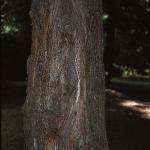

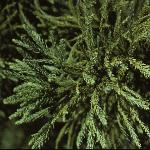


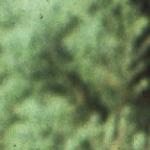
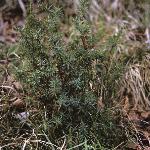
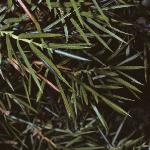

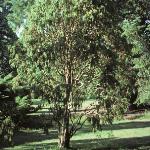
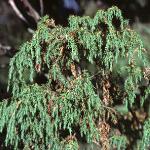

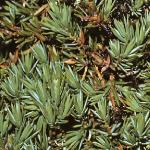




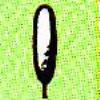 C
C O
O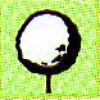 R
R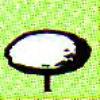 Fl
Fl N
N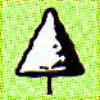 Br
Br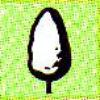 O
O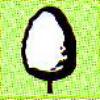 B
B N
N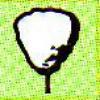 F
F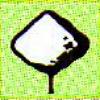 Br
Br N
N B
B